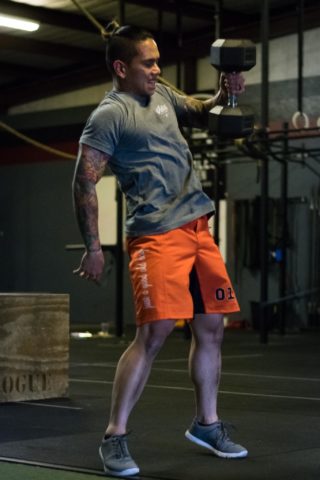 By: Coach Joshua Jericho Littauer
By: Coach Joshua Jericho Littauer
The focus of any strength program tends to be the big lifts; squat, deadlift, and press. These three movements are paramount to building muscle and increasing strength. However, they are not the only things needed to create a well balanced program or athlete. The tendency when only focusing on the big three is that there are imbalances created by the body’s natural lean towards a stronger side. These imbalances are then compounded by the additional load and stress put on the body by use of a barbell. This is why when we look at a complete program, it incorporates a little bit of everything, including what I like to call “accessory work”.
In general the accessory movements are not the glamorous kind, nor are they the kind we see posted all over Instagram. Regardless of their popularity or the prevelancy with which they are utilized, they are invaluable to the breadth and depth of the quality of a well rounded program. When discussing accessory work we need to define what we’re talking about. In my Strength program, the accessory movements are typically done using dumbbells, kettlebells, bands, and rings. There is an appropriate balance of using external loads to maximize range of motion and loading musculature, as well as using the athlete’s body weight as resistance to movement or for strict gymnastics. There exist some programs that are built entirely around these types of movements, and while it is not entirely wrong, I do think it misses a big portion of the strength gains that could be made.
There are multiple ways to do accessory work, each having their own merit. The one seen regularly is with two dumbbells or kettlebells used simultaneously in rep ranges from 5-20 at a time. The advantage of using two DB’s would be to get the both sides of the body working together in a similar range of motion while still allowing for added proprioception at the main joint being used. Because of the balance of having equal load on each side it forces the body to work together, keeping a braced midline, and be able to lift a high load. I’ll use a classic example here; the DB bench press. DB is used often in accessory to a traditional bench press or other upperbody pressing days. The dual DB variation allows for a high load to be applied, while still forcing each shoulder joint to stabilize throughout the lift.
Another variation would be single joint isolation with the use of only one DB or KB. This forces not only one side of the body to work at a time, but an imbalance that forces the rotational muscles in the core to engage. Using the same example as before, if only using one DB for the bench press, it forces the midline to contract to inhibit the body from rolling off the bench or rotating. There are multiple advantages to using only side of your body, however it often means that a smaller load must be used during the . These single arm or leg variations tend to be difficult for most athletes as they are not accustomed to using only one side at a time. When programmed appropriately these single sided variations can have added benefit for warming up, or helping the central nervous system (CNS) recover from heavier loads.
The last variation of accessory work we’ll discuss for now are banded movements. There are several ways to apply banded movements to a program and each has upside, despite creating a different stimulus. One thing that you will notice immediately when doing a banded movement of any kind is that there is more tension/resistance at the end range of motion than there is at the beginning. This has big benefits for forcing the body to adapt throughout the range of motion and not getting used to only one weight throughout the movement. Bands in this way can be added to normally set weight movements. Even those such as a deadlift, press, or squat. Another big advantage is that you can use a lighter resistance and push further into muscle fatigue and go to sets of true failure. This allows for greater hypertrophy in the muscle tissue that will then aid in building leaner, stronger muscle later (more on this in the future). By simply adding a variety of band sizes and tensions it really opens of the possibilities for accessory work in any program.
As we can see there are tons of benefits from having accessory exercises on top of the traditional big three lifts performed during a workout. The addition of these exercises helps to improve an athlete’s balance, work output, range of motion, joint stability, body awareness, and strength. These movements may not be the most fun to watch or perform, but the benefits are so broad it would be a shame to miss out by not keeping them in your program.
More articles on the accessory lifts, variations, and specific applications in the future. Also keep an eye out for Quick Tip Tuesdays and short videos or posts to improve your fitness.
As always: Stay Humble. Stay Hungry.
